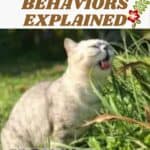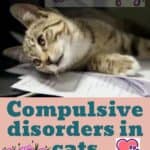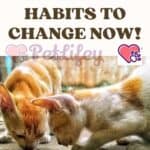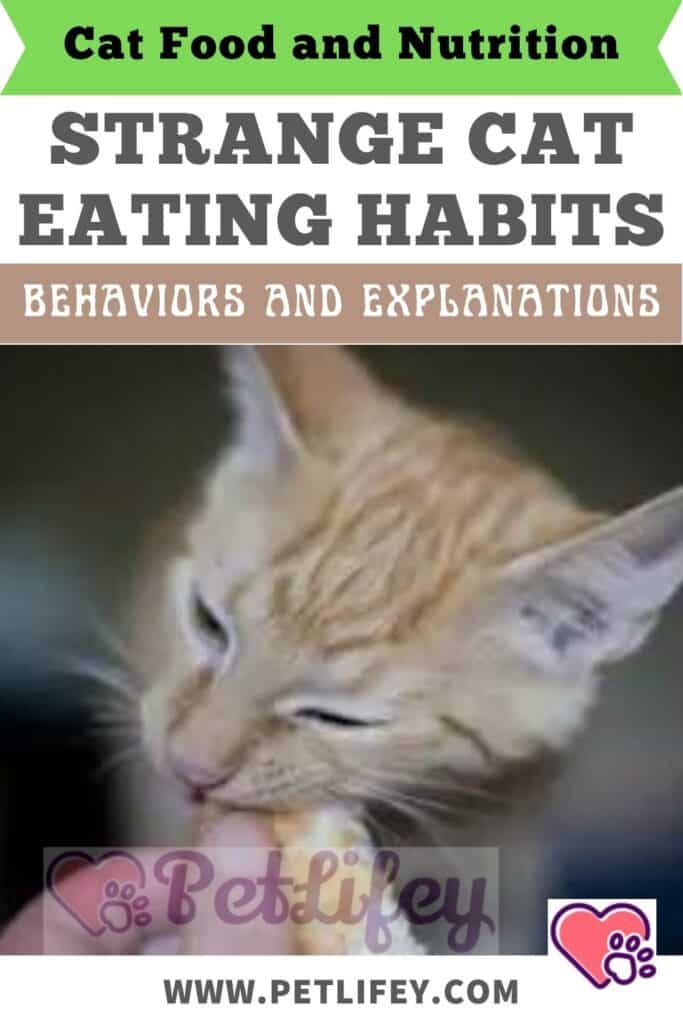
Anyone who has a cat at home has probably noticed the cat’s strange eating habits: but why do cats eat like this? We explain the most common behaviors
Usually most cats are used to consuming their daily ration of food divided into several small meals throughout the day, but as anyone who has adopted a cat can confirm each cat has a distinctive and personal way of eating their meals.
The strange eating habits of the cat include so many different behaviors: cats that eat so voraciously that they look like hungry dogs, others are picky and carefully select bites, still others take some food and run away to eat where no one can see them. But what’s behind these weird feline habits?
Eating habits of the cat: all the oddities of the cat
Whether it’s a gluttonous cat or a fussy and selective kitten with food, watching a cat while eating is a rather curious experience: there are lots of oddities that cat puts into practice at mealtime, such as preferring only a few types of dry or wet cat food, or go to the bowl only when completely alone in the house.
But where do cat food oddities come from? According to some experts, these are behaviors that are built over time on the basis of three very specific and interconnected factors: history, context and expectations.
History of the cat
With the history of the cat we essentially refer to its past and its genetic heritage: some cat breeds, in fact, are naturally inclined to accuse stress more or to perceive as a threat of what happens around them. But there are also stories of kittens who were orphaned as puppies, who therefore live in a constant feeling of dread or even fear. A cat with such a past is often prone to go into hiding to eat, out of fear that someone or something might harm them or steal their food.
The importance of the context
The place where the cat actually eats its meals can be defined as a context and is one of the factors that affects its more or less bizarre eating habits. The context represents the environment and the resources that the cat has available: if the cat perceives it as a peaceful, comfortable environment in which he can satisfy his needs, it is likely that he will eat calmly and calmly.
Expectations
With the term expectations we refer in this case to what the cat expects to happen when it eats: this can enormously affect its eating habits, because if it expects a negative evolution of the situation it is likely that it will try to eat quickly or who will hide each time with food in their mouth.
Practical tips for cat eating behaviors
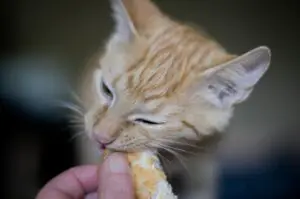
The cat’s preferences and eating habits develop in the early stages of a kitten’s life, influenced by the three factors we have seen previously and by what mother cat feeds her kittens. This is why it is necessary to ensure that a kitten has a healthy and varied diet from the very beginning of weaning: in this way, his palate will get used to different flavors and textures.
If the cat perceives its surroundings as threatening, it is likely that it is afraid of something: it could be another cat, but also the sounds of traffic coming from outside or maybe the cat could be afraid of the vacuum cleaner or other noisy appliances. When a frightened cat’s strange eating habits become worrying for their health, it is important to understand where the fears come from and eliminate the cause.
Finally, a recommendation for cat owners who refuse kibble and eat only wet food: before you think they are simply spoiled, try to check for any dental problems in the cat or for oral diseases that make chewing food painful dry.

